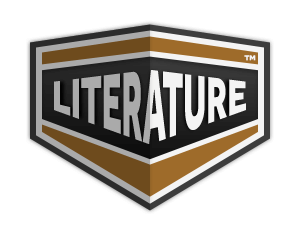The Drover's Wife Page #3
"The Drover's Wife" is a short story by Australian writer Henry Lawson, first published in 1892. The narrative focuses on the life of a resilient woman living in the Australian outback, left alone to care for her children while her husband is away droving cattle. The story vividly depicts her struggles against the harsh environment, isolation, and the constant threats posed by nature, including a lurking snake. Through this portrayal, Lawson explores themes of survival, endurance, and the often-overlooked strength of women in a patriarchal society. The tale captures the essence of Australian identity and the challenges of rural life in the 19th century.
out. He was the last of his tribe and a King; but he had built that wood-heap hollow. She is hurt now, and tears spring to her eyes as she sits down again by the table. She takes up a handkerchief to wipe the tears away, but pokes her eyes with her bare fingers instead. The handkerchief is full of holes, and she finds that she has put her thumb through one, and her forefinger through another. This makes her laugh, to the surprise of the dog. She has a keen, very keen, sense of the ridiculous; and some time or other she will amuse bushmen with the story. She had been amused before like that. One day she sat down “to have a good cry,” as she said--and the old cat rubbed against her dress and “cried too.” Then she had to laugh. It must be near daylight now. The room is very close and hot because of the fire. Alligator still watches the wall from time to time. Suddenly he becomes greatly interested; he draws himself a few inches nearer the partition, and a thrill runs through his body. The hair on the back of his neck begins to bristle, and the battle-light is in his yellow eyes. She knows what this means, and lays her hand on the stick. The lower end of one of the partition slabs has a large crack on both sides. An evil pair of small, bright bead-like eyes glisten at one of these holes. The snake--a black one--comes slowly out, about a foot, and moves its head up and down. The dog lies still, and the woman sits as one fascinated. The snake comes out a foot farther. She lifts her stick, and the reptile, as though suddenly aware of danger, sticks his head in through the crack on the other side of the slab, and hurries to get his tail round after him. Alligator springs, and his jaws come together with a snap. He misses, for his nose is large, and the snake's body close down in the angle formed by the slabs and the floor. He snaps again as the tail comes round. He has the snake now, and tugs it out eighteen inches. Thud, thud comes the woman's club on the ground. Alligator pulls again. Thud, thud. Alligator gives another pull and he has the snake out--a black brute, five feet long. The head rises to dart about, but the dog has the enemy close to the neck. He is a big, heavy dog, but quick as a terrier. He shakes the snake as though he felt the original curse in common with mankind. The eldest boy wakes up, seizes his stick, and tries to get out of bed, but his mother forces him back with a grip of iron. Thud, thud--the snake's back is broken in several places. Thud, thud--its head is crushed, and Alligator's nose skinned again. She lifts the mangled reptile on the point of her stick, carries it to the fire, and throws it in; then piles on the wood and watches the snake burn. The boy and dog watch too. She lays her hand on the dog's head, and all the fierce, angry light dies out of his yellow eyes. The younger children are quieted, and presently go to sleep. The dirty-legged boy stands for a moment in his shirt, watching the fire. Presently he looks up at her, sees the tears in her eyes, and, throwing his arms round her neck exclaims: “Mother, I won't never go drovin'; blarst me if I do!” And she hugs him to her worn-out breast and kisses him; and they sit thus together while the sickly daylight breaks over the bush.
Translation
Translate and read this book in other languages:
Select another language:
- - Select -
- 简体中文 (Chinese - Simplified)
- 繁體中文 (Chinese - Traditional)
- Español (Spanish)
- Esperanto (Esperanto)
- 日本語 (Japanese)
- Português (Portuguese)
- Deutsch (German)
- العربية (Arabic)
- Français (French)
- Русский (Russian)
- ಕನ್ನಡ (Kannada)
- 한국어 (Korean)
- עברית (Hebrew)
- Gaeilge (Irish)
- Українська (Ukrainian)
- اردو (Urdu)
- Magyar (Hungarian)
- मानक हिन्दी (Hindi)
- Indonesia (Indonesian)
- Italiano (Italian)
- தமிழ் (Tamil)
- Türkçe (Turkish)
- తెలుగు (Telugu)
- ภาษาไทย (Thai)
- Tiếng Việt (Vietnamese)
- Čeština (Czech)
- Polski (Polish)
- Bahasa Indonesia (Indonesian)
- Românește (Romanian)
- Nederlands (Dutch)
- Ελληνικά (Greek)
- Latinum (Latin)
- Svenska (Swedish)
- Dansk (Danish)
- Suomi (Finnish)
- فارسی (Persian)
- ייִדיש (Yiddish)
- հայերեն (Armenian)
- Norsk (Norwegian)
- English (English)
Citation
Use the citation below to add this book to your bibliography:
Style:MLAChicagoAPA
"The Drover's Wife Books." Literature.com. STANDS4 LLC, 2025. Web. 24 Feb. 2025. <https://www.literature.com/book/the_drover%27s_wife_5489>.








Discuss this The Drover's Wife book with the community:
Report Comment
We're doing our best to make sure our content is useful, accurate and safe.
If by any chance you spot an inappropriate comment while navigating through our website please use this form to let us know, and we'll take care of it shortly.
Attachment
You need to be logged in to favorite.
Log In